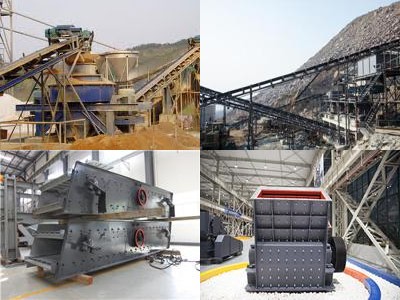Don't miss our holiday offer - 30% OFF!
How Does A Rock Crusher Machine Work?

Rock crusher machines play a pivotal role in various industries, from mining to construction, effectively breaking down large rocks into smaller, more manageable sizes. Understanding how these machines operate is crucial for maximizing productivity and ensuring safety in industrial settings. In this comprehensive guide, we delve into the intricate workings of rock crusher machines, exploring their key components, operational processes, and practical applications.
Introduction to Rock Crusher Machine Operations
Rock crusher machines function by applying mechanical force to break down large rocks into smaller fragments, which can then be used for various purposes such as road construction, building materials, and landscaping. These machines come in a variety of sizes and configurations, ranging from simple hand-held crushers to massive industrial crushers capable of handling tons of material per hour. At Zenith, we offer a wide range of rock crusher machines tailored to meet the diverse needs of our customers, ensuring efficient and reliable performance in demanding environments.
Key Components and Their Roles in Crushing Rocks
Central to the operation of a rock crusher machine are its key components, each playing a crucial role in the crushing process. The primary components typically include the feed hopper, feeder, crushing chamber, discharge outlet, and motor or power source. The feed hopper serves as a reservoir for the raw material, ensuring a steady supply to the crusher. The feeder then transports the material into the crushing chamber, where it undergoes compression and fragmentation under immense pressure. At Zenith, our rock crusher machines are equipped with high-quality components engineered for durability and optimal performance, ensuring consistent results in challenging conditions.
Step-by-Step Process of Rock Crushing Mechanism
The process of crushing rocks with a crusher machine involves several distinct stages, each contributing to the overall efficiency and effectiveness of the operation. Initially, the raw material is fed into the crusher through the feed hopper, where it is gradually conveyed into the crushing chamber by the feeder. Within the crushing chamber, the material is subjected to intense pressure exerted by the crusher’s jaws or hammers, resulting in the fragmentation of the rock into smaller pieces. Finally, the crushed material exits the crusher through the discharge outlet, ready for further processing or utilization. At Zenith, we offer comprehensive solutions for rock crushing applications, including a range of crushers and related equipment designed to optimize the crushing process and enhance productivity.
Common Applications and Benefits of Rock Crushers
Rock crushers find widespread use across various industries due to their versatility and efficiency in processing different types of materials. From mining and quarrying to construction and demolition, rock crushers play a vital role in enhancing productivity and profitability. These machines are capable of handling a wide range of materials, including limestone, granite, and concrete, making them indispensable in numerous applications. At Zenith, we take pride in offering high-performance rock crushers that deliver superior results, backed by our commitment to quality and customer satisfaction.
In conclusion, rock crusher machines are essential tools for various industrial operations, offering efficient and reliable solutions for crushing rocks of different sizes and compositions. At Zenith, we specialize in providing high-quality rock crusher machines and related equipment tailored to meet the unique needs of our customers. Whether you’re in the mining, construction, or recycling industry, our comprehensive range of products ensures optimal performance and productivity in any application. Explore our selection of rock crushers and discover the difference they can make in your operations.